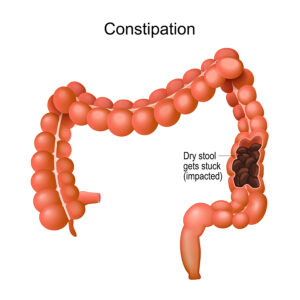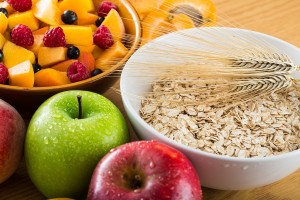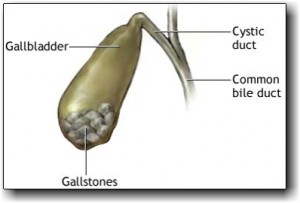This article is about your bowel movements. Dr. Michael Camilleri is a consultant and professor in the division of gastroenterology and hepatology at the Mayo Clinic in Minnesota. He mentioned that in the Victorian era it was thought that a person should have a bowel movement every day. But now gastroenterologists agree that three bowel movements per week are satisfactory. If you don’t have that spontaneously, you are said to suffer from constipation. On July 12 CNN published a review about the same topic.
But other people who consume a lot of fiber may have a bowel movement two or three times a day. This, too is considered normal. But in addition to the frequency of bowel movements the consistency of it is very important as well. “The stool form, appearance or consistency of the bowel movement is actually a much better criterion than the simple numbers to frequency,” Camilleri said.
Bristol stool chart
The Bristol Stool Chart classifies stools into seven groups. With this in mind, the healthiest types of stools are types three and four. This is where the stool is shaped like a sausage with cracks on the surface or snakelike and smooth.
Experts say that if you are excessively straining during an attempt to poop or if you feel like you have not totally emptied after a bowel movement, you have to make changes. Either you need to poop more often or you need to get a healthier stool quality.
Your body posture influences the ease of your bowel movements
If you put your feet on a stack of books, this raises your knees above your hips. In that position your pelvic floor muscles relax, which supports your bowel. The end result is that poop passes through more easily. This advice comes from Dr. Trisha Pasricha, a gastroenterologist at Massachusetts General Hospital and instructor of medicine at Harvard Medical School. She commented further: “We did not evolve to have our bowel movements sitting with our hips at 90 degrees on a chair, which is what we do now. We used to all have bowel movements squatting. Sitting at that sort of upright, 90-degree angle actually closes off the passageway.”
Proper food intake necessary for a good bowel movement
Start with a Mediterranean type diet, which consists of a lot of vegetables, salads, fruit, whole grains and nuts. According to the FDA the daily fiber load should be about 25 grams or more. Kiwis and prunes are useful as a dietary fiber source. On the other hand, you don’t want to overdo the fiber intake as it can cause abdominal bloating and loose stools. A high fat diet slows your digestive system down. But caffeine and caffein containing beverages stimulate your bowels. In addition, regular physical exercise gets your bowels moving.
Constipation
Constipation is an important symptom that prompts patients to see their physician. There seems to be a lot of confusion in the general public about this topic. There are enormous cultural differences. For instance, in Africa where the population eats on average a much larger amount of fiber, the bowel movements are much bulkier.
Sir Dr. Burkitt, the famous English surgeon, examined bowel movements (stools) of African tribes in comparison to his English countrymen and came to the conclusion that in the Western world we need to remedy our constipation problem and cancer of the colon problem by eating more fiber.
What we know now
He is still right: fiber is mainly treating constipation (not preventing cancer of the colon), but the chemicals that are also in the vegetables contain a multitude of natural anti-carcinogenic substances, which provide the powerful preventative action against colon cancer and many other cancers. Lycopene is one of these. Tomatoes and tomato products contain it.
Sir Dr. Burkitt’s observation that high bulk food (with vegetables and green leaves) prevents cancer is as valid today as it was in the early part of the 1900’s.
Chronic constipation
Chronic constipation cases that start insidiously, but then remain despite taking a high fiber diet, make the doctor think about other underlying causes such as hypothyroidism (= low thyroid function) or metabolic causes such as hypercalcemia and uremia from early kidney failure.
We find that elderly people become too inactive. This lowers the natural peristalsis of the gut. In combination with poor eating habits and chewing problems because of poor teeth it is often responsible for chronic constipation. Also, elderly people often are on multiple drugs, all of which have a weak “anticholinergic” side effect, which translates into suppressing peristalsis chemically resulting in constipation. Psychogenic factors and chronic depression as well as obsessive-compulsive behavior can also feed into constipation. It can lead to a hyper awareness of one’s own bowel pattern. This is unhealthy and requires counselling. But first the doctor must rule out any serious cause of chronic constipation.
Treatment for constipation (simple steps that help)
As mentioned above, the patient has to modify the food intake to include as much fresh and steamed vegetables as possible. This will lead to bulk in the colon and make the stool softer thus allowing it to pass through the rectum and anal canal easier. The other advantage of this simple step is that the bulkiness of the stool triggers the normal peristalsis movement of the colon moving the contents towards and through the rectum. Decreasing the passage time in the colon allows less water absorption, keeping the stool soft and pliable until it leaves through the anal canal. This is easily achieved by a diet rich in fruits and vegetables. Cereals containing bran like slow rolled oats (not instant oats) are also useful when taken with breakfast. Cut down on meat and fat consumption.
Enema with lukewarm water
A simple tool for chronic constipation is an enema with lukewarm water (1500 ml or 50 fl.oz.) in a Faultless enema bag without any additives in it. The person who gets the enema needs to lay on the left side. This way the water can flow in easily into the colon. When entering the nozzle into the anal canal, do not force it. Instead use a bit of Vaseline ointment to facilitate entrance. The response usually comes within 5 to 10 minutes following the enema. It works by dilatation of the bowel wall, which leads to a reflex bowel contraction. Although it would be safe to take this every day, usually you should not have to take it more than two or three times per week even in chronic constipation.
Extra fiber (bulking agents)
Next, if this is not tolerated or does not appeal to the patient, I would recommend a bulking agent such as psyllium (brand names: Prodiem Plain, Metamucil, Novo-Mucilax) and bran (Brand names: Kellogg’s All Bran and Post’s bran flakes). These are mild laxatives, which are safe to take every day and which will not make the patient hypokalemic.
Osmotic agents
Osmotic agent: One or two tablespoons of sorbitol as a 70% solution is a hyperosmotic solution, which stays in the gut and draws water by osmosis into the colon. The bulking effect creates peristalsis and the water retention makes the stool softer. It takes often 1 or two days to get the full effect. There can be transient abdominal cramps until the stool is passed. One variation of this theme is to give sorbitol in a mix with other osmotic agents as a micro-enema in the form of Microlax (from Pharmacia and Upjohn).
The emergency break (laxative)
The “emergency break”: Occasionally all of the above is simply too weak. The constipated person normally is controlled with the above measures, simply could not go to the bathroom for several days. Bisacodyl (brand name: Dulcolax) and sennosides (brand names: Ex-lax Sugar-Coated Pills and Senokot products) can help you unload any held back stool on a one-time only basis. Increase your vegetable and fruit intake, cut down on refined foods and fatty foods, which are devoid of fiber.
Conclusion
Because of its role in nutrient absorption and body detoxification the digestive system plays a direct role in overall health and wellness. When the colon is unclean, waste and toxins can become trapped. This places an extra strain on the detoxification organs (kidneys, liver) and weakens the immune system causing illness. It is therefore important to watch that your bowel movements are regular. When chronic constipation sets in there are several measures, we can take to keep our bowels moving. I explained this in detail above.









